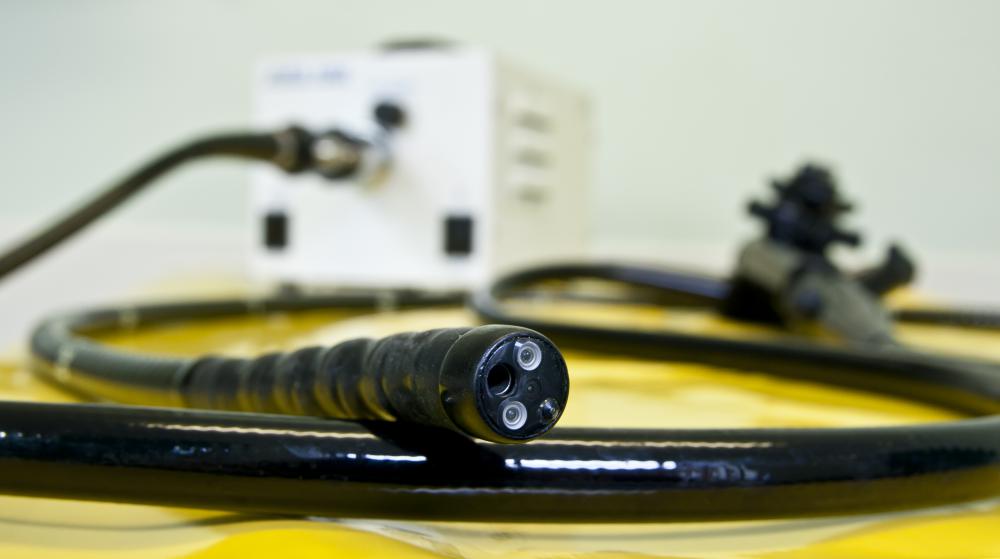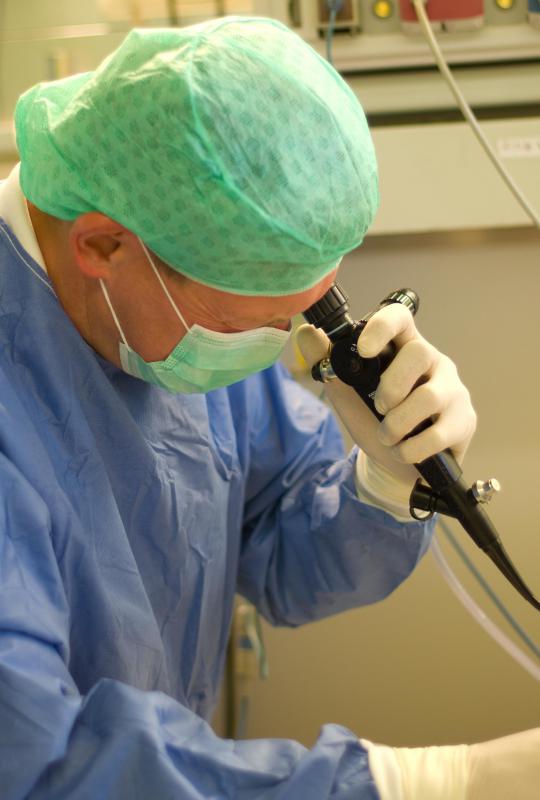At TheHealthBoard, we're committed to delivering accurate, trustworthy information. Our expert-authored content is rigorously fact-checked and sourced from credible authorities. Discover how we uphold the highest standards in providing you with reliable knowledge.
What is the Pyloric Sphincter?
The pyloric sphincter is a valve that controls the movement of the stomach contents from the stomach into the duodenum at the start of the intestines. It is an important part of the digestive tract that performs a number of functions related to regulating digestion and maintaining the healthy operation of the digestive tract. This portion of the stomach's anatomy is also known as the pyloric valve.
This structure is located in the pylorus, an area at the bottom of the stomach. The pylorus narrows and thickens to create the ring of smooth muscle that is the pyloric sphincter. When contracted, the sphincter holds the stomach contents in the stomach, allowing the digestive juices of the stomach to break them down into a substance known as chyme. When the chyme is ready, the sphincter opens, allowing it to pass into the duodenum for the next stage of the digestive process. If the stomach contents are dumped too early, digestion is disrupted, and people do not receive the full nutritional benefits of the food they consume.

In addition to regulating digestion, the pyloric sphincter also acts to prevent regurgitation from the intestines into the stomach. This is undesirable as it may disrupt stomach activity and could potentially make someone sick. Acting as a one-way gate guard, a healthy sphincter keeps the contents of the digestive tract moving along in one direction only.

People with stomach cancer can develop a blockage in the pylorus that makes digestion difficult. In a condition known as pyloric stenosis, the pyloric sphincter becomes narrowed, limiting the amount of chyme that can pass through. It can also open insufficiently or open at the wrong times, leading to disruption in the person's digestion. Conditions involving the pyloric sphincter can be diagnosed with the assistance of medical imaging studies including endoscopy, a procedure that involves inserting a camera into the body to provide a view of what is happening inside.

People who develop problems with their pyloric sphincters will need to see a specialist to discuss treatment options. Treatments vary, depending on the cause of the problem and the person's general level of health. They can include surgery to remove cancerous growths or address stenosis, along with medications. It is important to receive treatment for conditions involving the gastrointestinal tract, as they can develop into serious problems and create a domino effect in which an initial health problem leads to a cascade of medical issues.
AS FEATURED ON:
AS FEATURED ON:















Discussion Comments
I am 23 years old and currently having problems with my pyloric valve. I was an expert at projectile vomiting as a baby but the doctors had no idea why.
Finally I found a doctor who knew what the problem was and I have had a botox injection into the valve and a balloon inflated to enlarge the valve. Since then the botox has backed out and my pain, bloating, nausea and constipation have returned. I am scheduled for another botox injection to relieve some of my symptoms until I have surgery next month. I have heard from many people that it is very unusual for this to happen to an adult and surprising that I was as functional as I was for so long.
Has anyone had the problem where the stomach seems to empty your meals fairly quickly, where it was later determined to be an issue with the pyloric muscle (e.g. stretched or opening too often)?
What are the indications that something serious is wrong with the pyloric sphincter?
What I mean is, if a person is experiencing a lot of stomach discomfort when they eat and nausea, but no other cause can be found, could it be this particular valve working improperly?
How can you find out if your pyloric sphincter functions the right way?
My son was two months old when he started projectile vomiting. I knew something was very wrong because it had a pinkish color, but the doctor insisted he was allergic to milk. It kept getting worse and I had to sleep him in his bouncer so he didn’t choke on his vomit. After 2 weeks of watching him suffer I took him to urgent care where they did a culture on his vomit. And sure enough, it had blood in it and we were rushed to the hospital. He was diagnosed with pyloric stenosis and had surgery on his little stomach that night. He is now 9 and still has the scar on his tummy; I learned to listen to my mommy instincts.
Post your comments